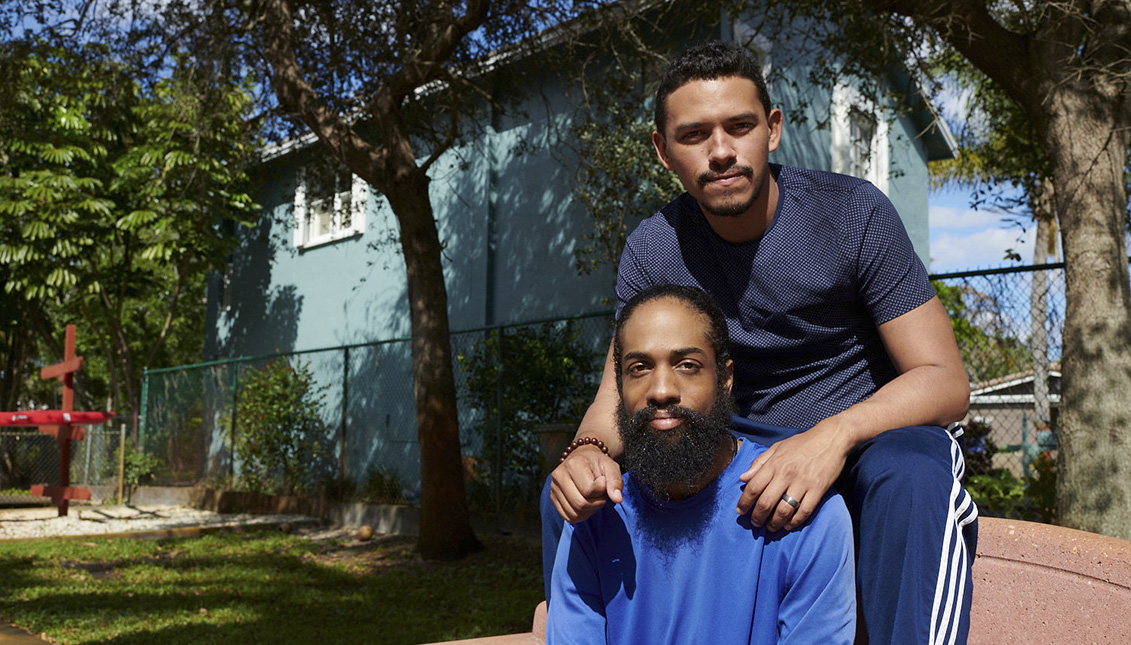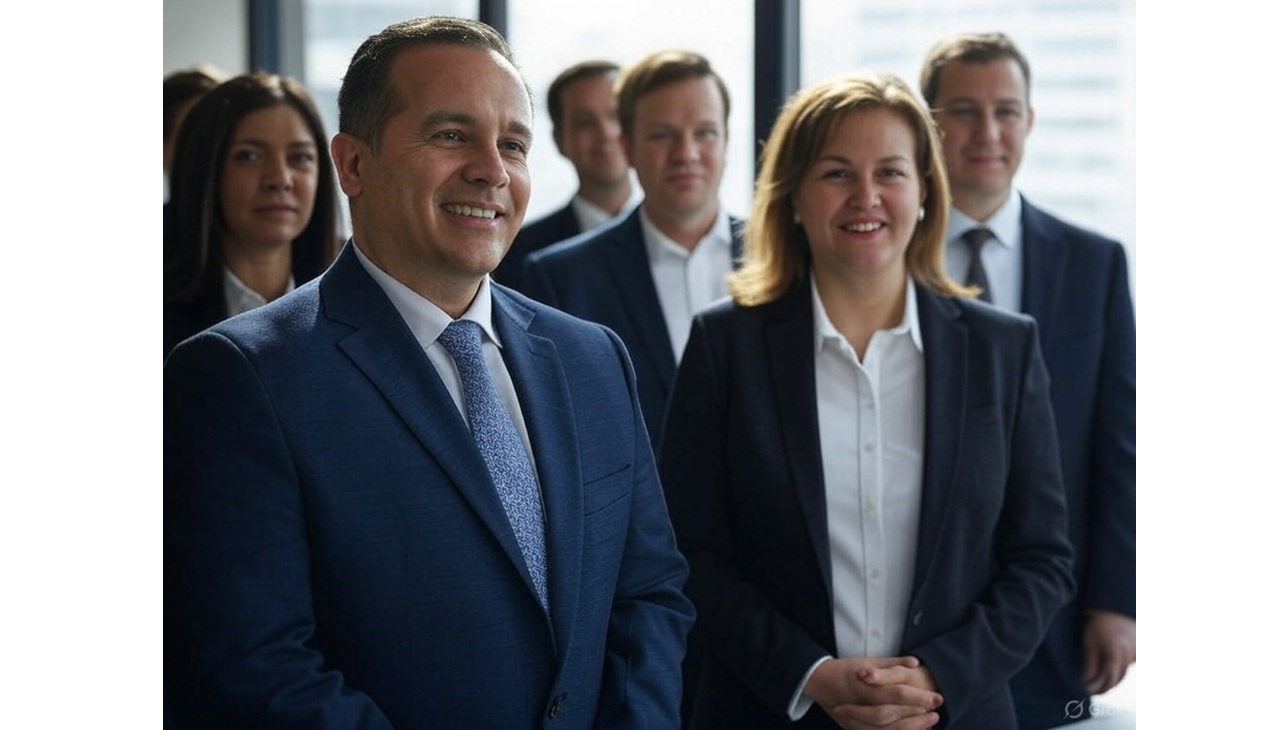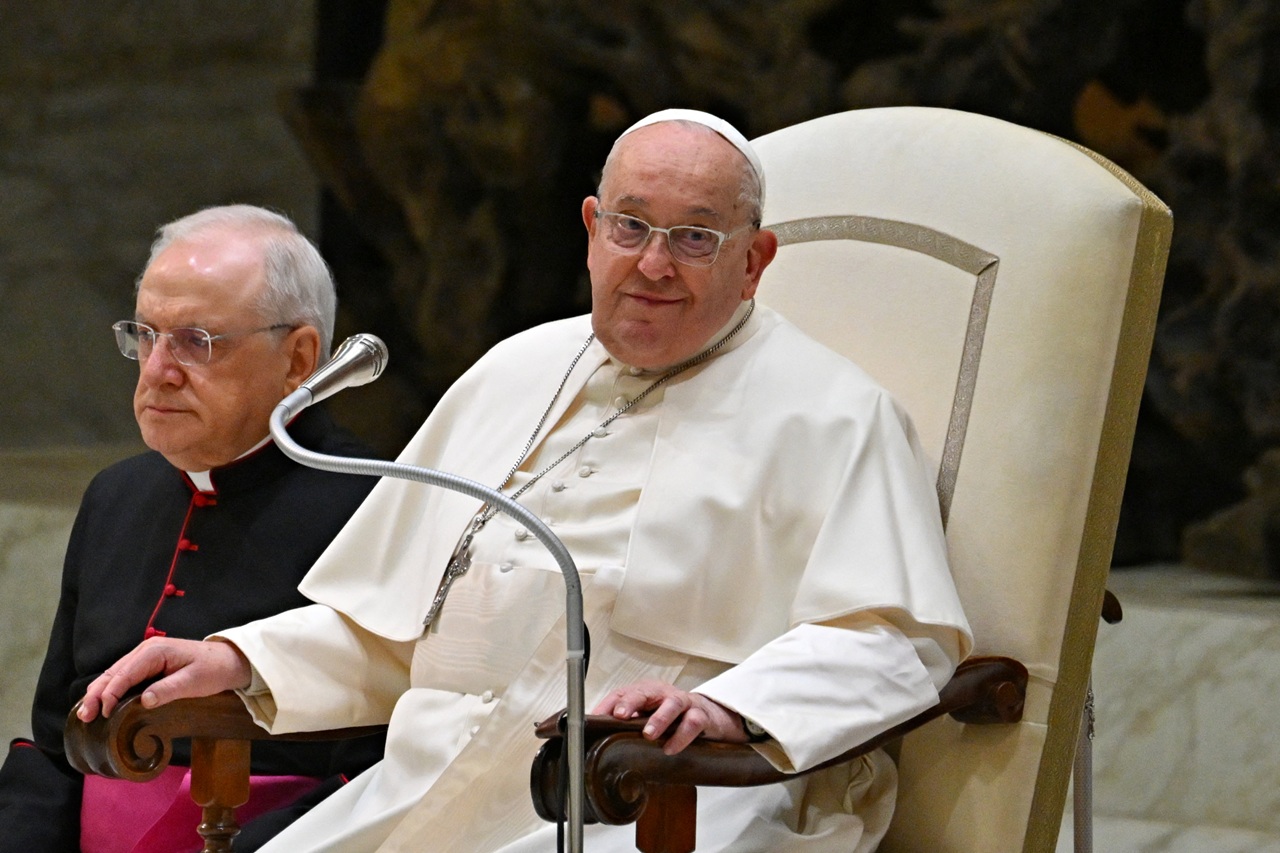
Latinx, LGBTQ and HIV positive people: A triple discrimination that nobody talks about
Racism and lack of diversity in healthcare facilities, in addition to the reduction of HIV/AIDS testing, are among the stumbling blocks facing the group,…
Journalists love statistics. We can say: More than 195,000 Hispanic/Latino men in the United States and Puerto Rico face AIDS and the stigma it carries daily. That 80% of new diagnoses among Hispanics are from gay and bisexual men or that in one out of three cases they did not receive viral suppression and in one out of five cases they were diagnosed late - according to 2018 data.
But the figures are not enough to understand the magnitude of a very serious national public health problem that is looming over the LGBTQ Latinx collective in the United States at the height of the health crisis, when HIV diagnoses seem to have reduced or stagnated and another much more modern pandemic, COVID, is on the agenda of the media and politicians.
Pioneering research by ViiV Healthcare and Action for Latinx Men has put its finger on the wound to find solutions. In collaboration with the Latino Commission on AIDS (LCOA) and with advice from HIV experts, they interviewed 760 gay, bisexual and transgendered men in eleven cities across the country in a global exercise of active listening to their fears, their needs and the challenges they face.
Discrimination, fear of deportation and lack of attention to diversity in clinical care, as well as the precarious economic situation that weighs on many of them should be on the table during election time.
We spoke with Guillermo Chacón and Marc Meachem, President of the Latino Commission on AIDS and Head of US External Affairs at ViiV Healthcare, respectively, about the findings of the "Here As I Am" report.
In what states have you seen the greatest neglect of Latinos facing HIV?
Marc Meachem (MM): I grew up in Los Angeles, spent time in the South and Northeast, and travelled to many other parts of the country – I’ve seen the impact of HIV and HIV-related stigma on communities, including on Latinos, manifest everywhere. With that, putting an end to HIV-related stigma is a crucial step in ending the HIV epidemic. Larger communities may provide more resources and ultimately more support, however people can face isolation whether in big cities or in rural communities. Our work is to build more inclusive and healthy communities everywhere.
Almost one in three people of Latin or Hispanic descent diagnosed with HIV live in the South , so this is clearly a region of focus.
Guillermo Chacon (GC): The interconnectedness of race, gender and socioeconomic status is something we all should be conscious of, if we are to have an impact on the health outcomes of communities most in need and affected by the consequences of the economic and social conditions and generations of distrust towards a segmented healthcare system. An intersectional perspective is vital to understanding the experiences and consequences of living with multiple identities and each institution should develop introspective processes to examine what they need to do better to allow them to be able to reach communities whose well-being and health have been neglected.
It is imperative that health interventions consider the vulnerabilities and strengths of affected populations. Interventions that deal solely with a narrow single mind focus on providing healthcare, without understanding the implication of institutional racism, discrimination, stigma, and marginalization will not make a sustainable difference. We need to embrace other conditions, identities, or behaviors, and develop a commitment in reducing health disparities in order to make lasting improvements in health and wellness in our diverse communities.
Our communities are in great need of strategies to navigate a segmented health care system without missing perspective of the intersectionality and advocate to change the health care system, for one that is more integrated and driven to improve health outcomes free of stigma and discrimination
GC: Machismo does have an impact on Hispanic/Latinx families, but it is not exclusive of Hispanic/Latinx. It is endemic to many societies, cultures, and communities. Within Hispanic/Latinx, it carries a wide array of psychological and behavioral dimensions. Machismo, impacts the lives of men and women, but probably has unique consequences on the lives of gay/bi Latino men and other MSM as well Trans Latinx communities. Although strides have been made, and times have changed, we continue to see the consequences of machismo in our communities.
Through research, we know that machismo has an impact on sexual risk and its connection to internalized homophobia, internalized transphobia that leads to rejection from family, friends and community that isolates people and has an impact on the emotional well-being of individuals. Therefore, the importance of chosen families that provide that safety net and sense of belonging, and fulfills the need to feel connected to a family.
Chosen families lessen the impact of increased lack of social support and acceptance for LGBTQ youth from their biological families, communities, churches, schools and healthcare systems. To counteract the social isolation and develop a sense of community, many Hispanic/Latinx LGBTQIA+ youth often form chosen or created families, with peers and older LGBTQIA+ persons that mimic nuclear family structures, to cope with rejection at home and in their communities. These resilient social networks are created with varying sets of rules and relationship dynamics that may directly impact the social determinants of health among this community.
GC: Language is fundamental, we advocate and create space to discuss language justice to trigger actions to honor diversity and deeper understanding on how language is connected to culture and identity. We need to do better in the U.S. to honor and recognize the importance of language justice in our daily life and activities in every aspect of our nation. When we refer to language justice, we mean the right everyone has to communicate in the language in which we feel most comfortable. In multilingual communities around the U.S. and the world, dialogue across language difference is only possible through the use of strategies to bridge differences in language. Language impacts us on a multiplicity of levels.
Strategies for bridging the divides of language are essential to any endeavor that truly seeks to be inclusive of people from different cultures, different backgrounds, and different perspectives. Language justice is one of the key components of both racial and social justice.
GC: Fears of deportation are a big challenge amongst immigrant communities. Creating awareness about where to test and receive services without those fears is important. The laws in the U.S. vary by state and that is important when dealing with perceived and real fears for testing. There is also a need to deal with immigration policies (immigration is a Federal law) as barriers to accessing health services. Creating awareness and developing positive policies promote access to health for all, regardless of immigration status. We need to promote fair immigration reform in order to improve the health and well-being of immigrant communities. We also recognize that:
- Access to health care for immigrants is a national issue and need be addressed with a national policy on health care for noncitizen and undocumented immigrants.
- National immigration policy should recognize the public health risks associated with undocumented persons not receiving medical care and support services.
- Increased access to comprehensive primary care, prenatal care, and chronic disease management may make better use of public health funding by alleviating the need for costly emergency care.
- National immigration policy should encourage all residents to obtain clinically effective vaccinations and screening for prevalent infectious diseases.
- Strengthening health care service provision by building new strategies: volunteer interpreter services and culturally and linguistically appropriate programs.
- Develop new and innovative strategies to support safety-net health care facilities, such as community health centers, qualified health centers, public health agencies, and hospitals that provide a disproportionate share of care for patients who are uninsured and from low socioeconomic status. All patients should have access to appropriate outpatient care, inpatient care, and emergency services.
"Many Hispanic/Latinx LGBTQIA+ youth often form chosen or created families to cope with rejection at home and in their communities"
Anti-immigrant rhetoric has also impacted the health profession and providers’ attitudes towards immigrants and disenfranchised communities becoming another critical barrier to access to care.
- Health care providers have an ethical and professional obligation to care for the sick. Immigration policies and laws should not interfere with the ethical obligation to provide care for all.
- Health care providers should encourage and promote cultural diversity and linguistic competency training and education for health professionals, which should include awareness, respect, evidence-based research, and capacity-building components.
- Health care providers should encourage and promote programs in continuing education at the local and national levels that assist health professionals in their efforts to better understand and serve the needs of underserved populations.
- Health care providers should build referral systems with other organizations in the community to provide better information to immigrants, in particular about life in the United States, their legal right, becoming citizens, and educational opportunities.
GC: We are currently dealing with this as we see a diversion of funding towards COVID-19 and the possibility of other emerging zoonotic viral infections and illnesses. The role that many of our HIV service organizations might have is also another important consideration and our organizations should have a role when thinking about the communities most impacted by COVID-19. They are the same communities impacted by the same social determinants that include poverty, race, socio-economic status, educational attainment, immigration status, race/ethnicity, gender and gender identity, sexual orientation and many other determinants.
RELATED CONTENT
Internally, the Commission has needed to adapt to a new reality, and many of our organizations serving communities at risk are struggling to adapt to new realities of serving our communities, maintaining sustainable funding, and making programmatic shifts. It is not so much that HIV is no longer spoken about, but HIV has been relegated by COVID in the media and funding priorities. For many of the organizations that serve our communities, adapting is essential to survival as well as the continuance of services to our communities.
"Anti-immigrant rhetoric has also impacted the health profession and providers’ attitudes towards immigrants becoming another barrier"
Our responsibility is to remind the general public and policy makers that HIV is not over, and that COVID-19 is a major pandemic that has created an extra layer to the HIV epidemic. We need more than ever to come together to respond to the impact of COVID19 without abandoning the mission and vision to design a world without AIDS and to find a cure for HIV.
GC: Puerto Rico has been a priority in the work that we have been doing at the Latino Commission on AIDS since we were founded in 1990. We understood how complex the issues related to health access that Puerto Rico faces and recognized the importance of developing partnerships and collaborations with organizations in Puerto Rico to support change. Puerto Rico has always been on our map, and being as supportive as possible of health policy changes recognized by our sister organizations as essential to accomplish improved health outcomes is important.
As an agency that is on the mainland and not Puerto Rican, we can show our support by listening to their needs. Despite great advances in HIV testing, prevention and care, insufficient progress has been made among Puerto Rican people who inject drugs, sexual minorities and gender minorities.
To meet the challenge of eradicating HIV in the United States and Puerto Rico we need to have present the inequalities suffered in Puerto Rico that include equal access to Medicaid (a Federal program, that Puerto Ricans do not utilize the same way, as used in the mainland) and other benefits that include health insurance. Additionally, the need to strengthen and create relevant programs for gay/bi men and other MSM, transgender women and people who inject drugs with relevant and sensitive services for these communities. One structural challenge that must change is the structural stigmatization on the levels of homophobia and transphobia that are not unique to Puerto Rico.
New measures and laws need to be set in place to ensure that violence against members of the LGBTQ+ communities and in particular, against Trans individual does not happen.
GC: Funding is a major issue; there have been major struggles to reach the point where government has recognized the need of specific sub-populations that include younger gay/bi Latino men and recently transgender Latinas.
There are programs that are able to assist women, especially women in reproductive age related to sexual and reproductive health. However, there are many other sub-populations that are perceived to be at less risk such as men who exclusively engage in sex with women, older adults, and several other sub-populations. It is urgent to raise awareness at the federal level, in particular at the Health and Human Services (HHS) of the benefits of comprehensive Latino men’s health needs, realities and challenges. Equally important is the need to develop effective behavioral and homegrown interventions and prevention models by Latino men for Latino men on health and wellness.
GC: Approximately 4.5% of the American population identifies as a sexual minority. We would think that we would see positive images on media, TV programs and series that include LGBTQIA+ members of the Latinx communities. However, there is an absence and invisibility of members of this population that might create positive images or role models for our LGBTQIA+ communities. We mostly hear about these communities through the news because of acts of discrimination and violence. Latinx may experience greater rates of discrimination than White sexual minorities, due to their intersecting identities as ethnic minorities and sexual and gender minorities. It is urgent to developed safe spaces for gay, bi and trans Latino men to tell their stories, but very important to have providers and key policy makers to open to listening, to change and build support for decades of being ignore.
"Putting an end to HIV-related stigma is a crucial step in ending the HIV epidemic"
MM: The greatest benefit of sharing one’s stories is that it can give others hope. Many of us think we are alone when facing life’s trials. In the moment it can be hard for us to realize that there are many who have experienced or are experiencing the same challenges. It’s hard to have that perspective when you are in the midst of the storm.
That’s why listening and getting an understanding of the stories of people affected by HIV drives everything that we do at ViiV Healthcare. Elevating the voices of community through research and sharing those voices in cultural settings (plays, stories, poetry) is a more robust way to engage people and communities in facing and addressing the issues they face.
You can access to the report "Here As I Am" HERE.











LEAVE A COMMENT: